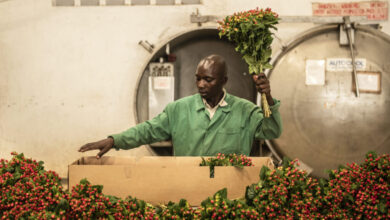

NASHIK, India — Parag Narvekar, a former scientist of the National Aeronautics and Space Administration (NASA) from western Indian city Nashik, has developed an affordable sensor to boost crop production.
The sensor, when made available, will be priced at INR 10,000 ($134) for farmers in the country. Earlier, the sensor used to cost INR 1.5 lakh ($2,013).
Narvekar, along with Vilas Shinde, the chief managing director of farmer producer company Sahyadri Farms, experimented with the technology and developed the sensor in the farms themselves.
“It’ll help farmers understand fertilizer and its usage and irrigation depending on the current weather condition,” Narvekar said.
“There is a lot of agriculture technology in countries like the US and Europe to deal with crop production following the global climate change. However, there was no such technology available in India,” said Narvekar.
“After working at NASA, I decided that I should do something for my country. Agriculture is the backbone of the country. Farmers cannot afford such technology. Hence, I experimented with developing an affordable technology. Finally, I executed the plan last year.”
“The sensors could help recognize suitable timings for irrigation following the weather, decisions that farmers could take for better crop quality, fertilizers that can be used, medicines for crops, and agricultural practices that can be followed,” said Narvekar.
“The newly-developed sensors could also be used in weather forecasting through satellite data sets. The sensors can be linked with an agro advisory to add up the updates on weather developments. If the farmers put the sensors at their farms, they could assess the weather of the nearby areas,” Narvekar said.
Narvekar and Shinde wanted to create a sensor that could give data accuracy along with affordability.
“We worked on the sensor for the past three years. The sensors could be placed on the farm or at the farmer’s place, instead of the old sensors that could be placed only at the village level,” said Shinde.
Ramesh Gunja, a farmer working at the Sahyadri Farm, discussed the benefits of the sensor and how it proved helpful.
“We can understand the rain prediction and its percentage in advance and can prepare ourselves accordingly,” said Gunja. “This also helps us know the medicine to be sprayed on the crops.”
“We get the confidence before taking decisions to proceed with our work, and wastage can be avoided due to the rain. We can make sure that the right thing goes at the right time.”
The gross value added from crops within the agriculture sector across India stood at 57 percent in the fiscal year 2018. Figures showed a decreasing trend in the economic contribution of crops to agriculture. The value of gross value added that year amounted to nearly INR 13.31 trillion ($0.17 trillion), reports suggested.
(With inputs from ANI)
(Edited by Amrita Das and Ritaban Misra)
The post Ex-NASA Scientist Develops Affordable Sensors To Boost Crop Production appeared first on Zenger News.





